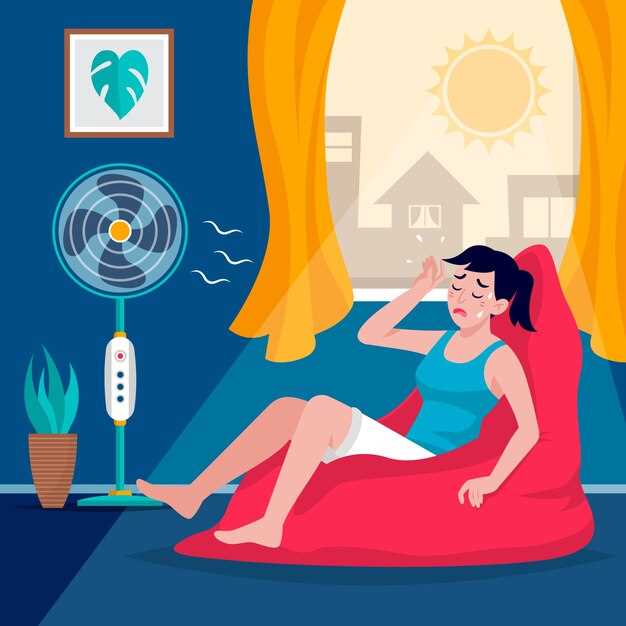
As the summer heat intensifies, ensuring optimal air conditioning performance becomes crucial for maintaining a comfortable indoor environment. A reliable air conditioning system not only cools your space but also contributes to better air quality and overall well-being. However, many homeowners neglect routine maintenance that can significantly enhance their A/C’s effectiveness.
In this article, we will delve into essential tips and tricks to boost your air conditioning system’s performance during the sweltering summer months. Whether you want to reduce energy costs or make your home feel more refreshingly cool, understanding the interplay between heat and conditioning is vital. With a few simple adjustments and proactive measures, you can enjoy a consistently pleasant atmosphere, even when the temperatures soar.
From regular filter changes to optimizing thermostat settings, we will explore actionable steps you can take to ensure your system operates at peak efficiency. By taking control of your air conditioning maintenance, you not only enhance comfort but also prolong the lifespan of your unit, offering both immediate and long-term benefits.
Regular Maintenance Tips for Your Air Conditioning Unit

To ensure optimal performance of your air conditioning unit during the hot summer months, regular maintenance is essential. Start by checking and replacing air filters monthly. Clogged filters restrict airflow, making the system work harder and less efficiently, which can lead to increased energy consumption and potential breakdowns.
Next, clean the exterior of the unit by removing any debris, such as leaves and dirt, that can obstruct airflow. Ensure the area around the unit is clear, allowing sufficient space for air circulation. This helps your air conditioner run more efficiently and reduces the strain caused by accumulated heat and dirt.
Additionally, inspect the insulation on refrigerant lines, as any wear and tear can affect the unit’s cooling efficiency. Proper insulation ensures that the refrigerant maintains the required temperature while circulating, improving overall performance.
Consider scheduling a professional tune-up at least once a year. During this service, a technician can check for leaks, examine system controls, and calibrate the thermostat. This proactive measure can help catch potential issues before they escalate, ensuring your air conditioning unit operates smoothly throughout the hot summer.
Finally, keep an eye on the thermostat settings. Setting it to a reasonable temperature can provide comfort without overworking the unit, thereby extending its lifespan and ensuring it efficiently manages the summer heat.
How to Optimize Thermostat Settings During Hot Days

Maintaining a comfortable indoor environment during the sweltering heat of summer is essential for both comfort and energy efficiency. One of the most effective ways to achieve this is by optimizing your thermostat settings. Proper adjustments can significantly enhance your air conditioning (A/C) performance while keeping energy costs in check.
Set a Standard Temperature
During high temperatures, setting your thermostat to a consistent and moderate temperature can greatly improve cooling efficiency. Aim for a setting of around 75°F (24°C) when you’re home. Every degree lower can increase energy consumption by up to 10%. On particularly hot days, consider raising the temperature slightly while still remaining comfortable.
Utilize Programming Features
If your thermostat has programmable features, take advantage of them. Schedule higher temperatures during the day when you’re away, allowing the A/C to run less frequently. Program it to cool down the home shortly before your return, ensuring a pleasing environment without excessive energy usage.
Consider “Eco” Mode
Many modern thermostats offer an “eco” mode, which adjusts the temperature settings based on outdoor conditions. This mode can help reduce energy consumption during periods of less extreme heat while maintaining a comfortable level of conditioning within your home.
Monitor Humidity Levels
High humidity can make hot days feel even more uncomfortable. If your A/C unit is equipped with a humidity control feature, use it to optimize comfort. Keeping humidity levels in check can allow you to set your thermostat a few degrees higher while still feeling cool. Aim for indoor humidity levels between 30% and 50% for optimal comfort.
Use Ceiling Fans Wisely
Pairing your thermostat settings with ceiling fans can enhance cooling efficiency. Fans create a wind-chill effect, making you feel cooler without lowering the thermostat significantly. In conjunction with your A/C, set the fans to rotate counterclockwise to push cool air down into the living space.
By implementing these strategies for optimizing your thermostat settings during the heat of summer, you ensure that your air conditioning unit operates efficiently. This not only enhances your comfort but also contributes to reduced energy costs throughout the season.
Simple Ways to Enhance Airflow and Cooling Efficiency
During the scorching summer months, effective air conditioning is essential to maintaining a comfortable indoor environment. Improving airflow and cooling efficiency can significantly reduce energy consumption while ensuring that your space remains cool and pleasant. Here are a few practical tips to achieve this.
1. Clean or Replace Air Filters: Clogged air filters restrict airflow and force your air conditioning system to work harder, which can lead to increased energy usage and wear. Regularly cleaning or replacing filters every 1-3 months will help maintain optimal airflow and improve conditioning performance.
2. Adjust Vents: Ensure that all vents are open and unobstructed. Furniture, curtains, and other objects can block airflow, making your system less efficient. Directing vents towards the center of the room can promote better air circulation and cooling.
3. Seal Ducts: Leaky ducts can significantly diminish cooling efficiency by allowing conditioned air to escape. Inspect and seal any gaps or tears in your ductwork to ensure that the cool air reaches its intended destination without unnecessary loss.
4. Use Fans Wisely: Ceiling fans and portable fans can help circulate the cool air produced by your air conditioning system. Set ceiling fans to rotate counterclockwise in summer to create a wind-chill effect, which increases comfort without raising your cooling system’s workload.
5. Keep the Thermostat at an Optimal Temperature: Setting your thermostat to a higher temperature, like 78°F (25°C) when you are home, can significantly improve cooling efficiency. Each degree above this temperature can save energy and reduce the overall heat load on your system.
6. Block Direct Sunlight: Sunlight streaming through windows can raise indoor temperatures quickly. Use blinds, curtains, or UV-blocking window films to minimize heat gain during the hottest parts of the day, allowing your air conditioning system to work more effectively.
7. Schedule Regular Maintenance: Annual maintenance checks by a qualified technician can ensure your system operates at peak efficiency. Routine inspections and servicing can identify potential issues before they become major problems, helping to enhance airflow and cooling performance throughout the summer.
By implementing these simple strategies, you can significantly boost the performance of your air conditioning system, making your summer more comfortable while keeping energy costs in check.

